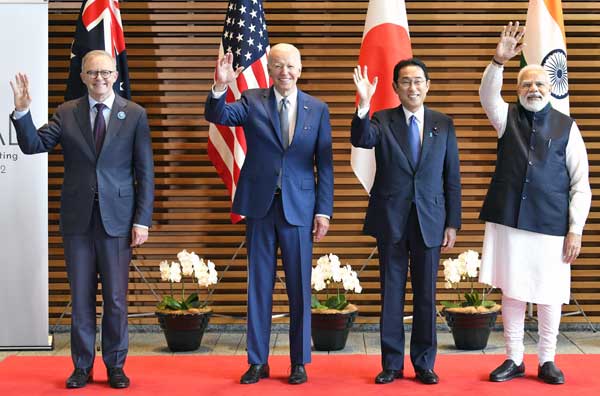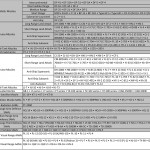QUAD, that includes the US, Japan, Australia, and India, had been dormant until 2017, restructured for various reasons such as growing presence of China and its aggressive behavior in Indo-Pacific region, securing rules based order in this region, augmenting the existing institutions, securing geostrategic and geo economic interests by way of freedom of navigation, and promoting connectivity and development of this region.
Actual motivation that plays a crucial role in reenergizing the QUAD is that all member countries of this group are of the firm conviction that rise of China and reach of its Belt of Road Initiative (BRI) project are posing serious threats to their political, economic, climate change, and global health interests. BRI was initially designed to connect China’s modern coastal cities to its underdeveloped interior to its Southeast, Central, and South Asian neighbors to make China the epicenter of the more connected world.
The scope of BRI encompasses the Digital Silk Road that comprises recipient countries’ telecommunication networks, artificial intelligence capabilities, cloud computing, e-commerce, mobile payment systems, surveillance technologies, and other high-tech areas. BRI also includes the Maritime Silk Road under which it has developed ports of countries in the Indian Ocean Region (IOR) and a permanent Overseas Naval Base at Djibouti. BRI’s projects have been designed in such a way that causes global macroeconomic instability, increasing the likelihood of debt crises, creating more dependability of recipient countries over China to make them more susceptible to Chinese political pressure to project its power all over the globe.
This above mentioned dynamics is a challenge for QUAD countries that propels the member countries to make Indo-Pacific as a crucial theater of competition with China. India as a vibrant economy and leading democratic power will play a crucial role in thwarting the relentless onslaught of China to project its power in this region. Despite of renewed enthusiasm regarding the QUAD, India has to weigh its own security, economic, diplomatic, and political calculations while investing in this group.
One of the main reasons is that India views the IOR rather than Pacific region as its main concern. The IOR stretches from east coast of Africa to the western and southern Pacific that includes portions of West Asia. While for America and other countries Pacific region comprises the region except ‘Africa and West Asia’ is the main area in which China is playing its strategic games aggressively and thereby threatening the geopolitical and economic interests of the member countries of the QUAD other than India. In a nutshell, there is a strategic difference in the conception of Indo-Pacific region between India and the US. Another important concern of India is that it is a reality that China has become India’s number one trading partner surpassing the US.
Therefore, to participate in the group like QUAD that is being seen as anti-China in international politics will be against India’s economic interests and its fundamental non-alignment policy. Though the non-alignment has lost relevance after the Cold War, but still India does not want to lose its strategic autonomy which will be jeopardized by joining any group that is seemingly against any country like China. Another important concern of India is that it cannot fully rely on the US from security point of view. There have been various instances in India’s foreign policy that shows questionable behavior of the US in the past.
Whether it be supplying the F-16 fighter aircrafts to the Pakistan in its so called ‘war against terrorism’ or using the ‘Political Islam’ to check the Soviet footprints in Afghanistan that jeopardizing India’s security in its neighboring region even today are various examples that show the behavioral pattern of the US that changes in accordance with its strategic interests and priorities in any region. Therefore, India has always been a little wary of the US as a long term reliable and trustworthy partner in its politico-security calculations.
India’s principle of ‘strategic autonomy’ that has given good results till date restricts it to embrace full potential of the QUAD to counterbalance the increasingly growing geopolitical influence of China. Another important challenge that India faces in QUAD is that India and China both are the member of very important regional organizations like Brazil, Russia, India, South Africa, China (BRICS) and Shanghai Cooperation Organization (SCO). Too much aggressive posturing against China in QUAD could undermine India’s position in these organizations in which China plays a very decisive role.
In QUAD, no country except India has a border which China disputes this reality also limits the scope of India in adopting the aggressive military posturing in Indo-Pacific region. If India does so, there could be a problem of Chinese aggression on its border region. Though, India has developed its warfare capabilities up to great extent but in comparison to other QUAD countries, it lags behind in several dimensions. For instance, India does not have an industrial base to generate advance combat platforms. Furthermore, growing procurement of military hardware has failed to transform India into military power due to shortfalls in major force transformations, lack of jointness of its services, and with no national security doctrine and architecture. In addition, being an emerging economy, India has very high pressure on its scarce natural resources to spend more on defense to counter Chinese repositioning. Most importantly, China, through its BRI, is influencing and trying to change the domestic politics of the countries like Pakistan, Nepal, and Sri Lanka in its favor to oust or minimize India’s influence.
Therefore, India has very limited options to counter China’s growing influence in Indo-Pacific region. Now the question arises – What course of actions is strategically fit for India according to the above mentioned constraints?
Intelligence and Information Sharing
In current scenario, maritime peace and security in Indo-Pacific region is facing growing Chinese threat across both traditional and non-traditional channels. By adopting covert and assertive ways, China is transforming the whole situation into its favor to expand its geopolitical influence.
For instance, harassing the USNS Impeccable, de-facto control over Scarborough Shoal in 2008, deploying a Chinese research ship in Indian waters, and very recently PLA has been successful in land reclamation and installation of military equipment in disputed maritime region, are some instances that are expressing Chinese aggressive behavior and its repositioning threatening the political, security, and economic interests of the QUAD countries.
In above mentioned circumstances, India along with other member countries should develop intelligence and information sharing mechanism in QUAD which is not a formal alliance till date that restricts sharing the information and intelligence amongst the member countries of this group. Many ways can be devised for information sharing as member states have huge military assets in IOR and Asia-Pacific region.
For instance, on the line of Trilateral Information Sharing Mechanism (TISA) that has been signed among the Australia, Japan, and the United States for expediting information sharing mechanism, a very robust and comprehensive maritime security information sharing agreement that includes India can be designed in order to conduct defense exercises and operations for maintaining peace and stability and safeguarding the strategic interests of the member countries.
More importantly, there ought to be a proactive approach in countering the ever growing threats to the strategic interests of every member country. In addition, four member states can also take up the initiatives such as Regional Cooperation Agreement on Combating Piracy and Armed Robbery against Ships in Asia (ReCAAP), a multilateral agreement signed in 2004 among 16 Asian countries.
Economy
China’s BRI which is of $1trillion worth, according to most of the analysts, approximately $210 billion China has already invested in Asian countries and the countries located in IOR region such as Sri Lanka, Pakistan, Maldives, and Myanmar – “to make them more dependent in every sense and utilize them as a tool to expand its hegemonic ambitions and ousting the influence of other countries such as India.” But, still some smaller countries are welcoming Chinese investment.
In this scenario, India should use QUAD as a platform to carve out bilateral and trilateral initiatives with other member countries to expand and enhance regional connectivity. At the same time, India should also set the ‘terms of engagement’ as other member countries of the QUAD are doing so that rising China does not remain inimical to their interests. It will surely be happen that, major or minor power, will continue to engage with China but the war is won by the country who will set the terms of engagement by paying attention on the specific needs, vulnerabilities of every kind of a particular country.
Another point that could be very useful in the above mentioned context is that – India should highlight the – “predatory aspect of Chinese BRI and loopholes of the Chinese infrastructural policy to the country to which it is getting engaged or has been engaged and become a long term trustworthy partner by offering developmental assistance and making them capable to safeguard their political and economic interests in the Indo-Pacific region”.
Diplomacy
QUAD is the platform that proffers unique opportunity to India to have diplomatic consultation for better regional policy- coordination with the member countries to discuss several crucial issues that affects the Indo-Pacific region such as maritime security, multilateralism, and connectivity. It can set the stage of ‘preventive diplomacy’ to discuss specific policy measures with likeminded states based upon shared regional perspectives on security. The positive aspect of the QUAD is that its institutional framework and ambitions are formally unstated and, being a small group, its member countries can quickly work together for building an alliance unconstrained by the conventional principles of non-intervention and consensus- based decision that are the fundamental principles of ASEAN that makes it ineffective while iron handedly dealing with the threats to the political and economic interests of the nations belong to the Indo-Pacific region.
Military
Although, QUAD is not a security alliance due to the reasons like low likelihood of large scale military conflicts because of the presence of large number nuclear capable states in this region but military alliance is the epicenter for being relevant from regional security perspective. Therefore, India and other member countries should pay attention on carving out military cooperation to tackle peacetime and grey zone threats.
India with other member countries of QUAD ought to look for military cooperation in very crucial areas like, interoperability, military technology and defence equipment transfer, and capacity building. More importantly, India can leverage by being a signatory to Communications Compatibility and Security Agreement (COMCASA) that offers access to very sensitive military technology from USA that will enhance its warfare capabilities. In the same way, India can be benefitted from its US-2 amphibious aircraft deal with Japan.
Though India has its own limitations and constraints while engaging with QUAD, but surely, it offers very constructive and progressive platform to India in particular and other member countries in general to countering the aggressive and assertive behavior of the China that is posing serious threat to the regional security of Indo-Pacific region.
References
Miller Chatterjee, Milar(2021). “The QUAD, AUKUS, and India’s Dilemmas”, Council on Foreign Relations, Available on: https://www.cfr.org/article/quad-aukus-and-indias-dilemmas , [Accessed on: 17 Jan, 2022]
Lew J. Jacob, Roughead Gary (2021). “China’s Belt and Road: Implications for the United States”, Council on Foreign Relations, Available on: https://www.cfr.org/report/chinas-belt-and-road-implications-for-the-united-states/download/pdf/2021-04/TFR%20%2379_China%27s%20Belt%20and%20Road_Implications%20for%20the%20United%20States_FINAL.pdf [Accessed on: 17 Jan,2022]
Pant, Harsh V. (2022). “India and the Quad: Chinese belligerence and Indian resilience”, Observer Research Foundation, Available on: https://www.orfonline.org/research/india-and-the-quad/ [Accessed: 17 Jan, 2022]





